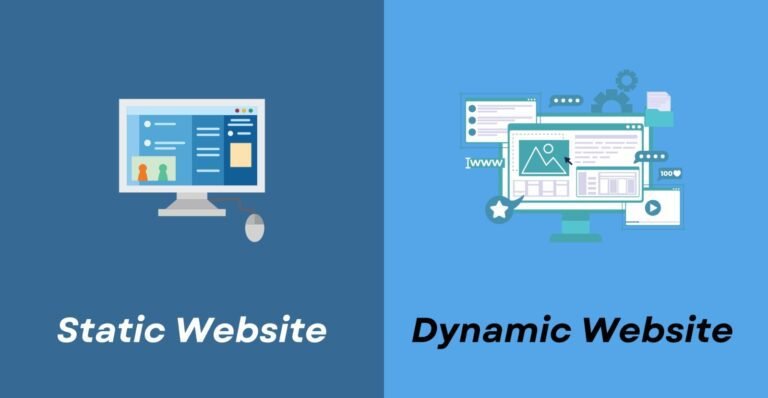Difference between a Static and Dynamic Website

In the ever-evolving world of web development, understanding the fundamental differences between static and dynamic websites is crucial for businesses aiming to establish an effective online presence. At Webbirth, we specialize in crafting tailored websites that align with your business goals. Here’s a detailed look at static and dynamic websites, their key differences, and which might be the best fit for your needs.
What is a Static Website?
A static website consists of web pages with fixed content. Each page is coded in HTML and displays the same content to every visitor. Static websites are straightforward, with each page built and stored as a separate HTML file.
Features of Static Websites:
- Fixed Content: Each page is created individually and remains unchanged until manually edited. This simplicity makes static websites easy to develop and maintain.
- Speed and Performance: Since static sites are pre-rendered, they often load faster, providing a seamless experience for users.
- Lower Cost: The cost of development and maintenance is generally lower compared to dynamic websites, making it a cost-effective solution for many businesses.
- Ease of Hosting: Static websites require minimal server resources and can be hosted on any basic web server.
Advantages of Static Websites:
- Faster Load Times: Pre-built pages are served quickly to users, enhancing the overall user experience.
- Increased Security: With fewer server-side processes, static websites are less vulnerable to security threats compared to dynamic sites.
- Simpler Development: Ideal for simple websites or landing pages, static sites are easier and quicker to develop.
When to Use a Static Website:
- Personal Portfolios or Blogs: When minimal interactivity or frequent updates are needed.
- Small Business Websites: For businesses that need a straightforward site to showcase their services without regular content changes.
- Landing Pages: Ideal for single-purpose pages or campaigns with fixed information.
What is a Dynamic Website?
Dynamic websites offer a more interactive and engaging user experience by generating content in real-time based on user interactions or data inputs. These sites use server-side scripting languages like PHP, ASP.NET, or JavaScript frameworks to create and display content dynamically.
Features of Dynamic Websites:
- Real-Time Content Generation: Pages are generated on the fly based on user requests, data from a database, or user interactions.
- User Interaction: Dynamic websites support interactive features like forms, forums, user accounts, and personalized content.
- Scalability: Designed to handle complex features and large volumes of content, dynamic sites can grow with your business.
- Content Management Systems (CMS): Platforms like WordPress, Joomla, and Drupal allow users to manage content without needing to code.
Advantages of Dynamic Websites:
- Enhanced User Experience: Interactive elements and personalized content make for a more engaging user experience.
- Easy Updates: Content can be updated frequently without needing to manually edit individual HTML files.
- Robust Functionality: Ideal for sites requiring complex features like e-commerce capabilities, membership systems, or real-time data integration.
When to Use a Dynamic Website:
- E-Commerce Sites: For online stores requiring product listings, shopping carts, and user accounts.
- Content Management Systems (CMS): Websites that need frequent content updates, such as news sites or blogs.
- Social Networks or Forums: Platforms that require user-generated content and interactive features.
Static vs. Dynamic: Which is Right for You?
The choice between a static and dynamic website largely depends on your business needs and goals:
Static Websites: Ideal for simpler, informational websites with limited interaction. They offer a cost-effective solution for businesses that do not require frequent content updates or complex functionalities.
Dynamic Websites: Best suited for businesses requiring interactive features, frequent updates, or database-driven content. They provide a more versatile platform for engaging users and managing extensive content.
How Webbirth Can Help
At Webbirth, we understand that every business has unique needs. Whether you’re looking for a straightforward static website or a complex dynamic platform, our team of experts will work with you to create a solution that meets your objectives and enhances your online presence. We focus on delivering high-quality, tailored websites that align with your business strategy.
Explore our services to find out how we can help you build a website that enhances your online presence and drives your business forward.
Get in touch with us today at info@webbirth.in or visit Webbirth to learn more about our offerings.
